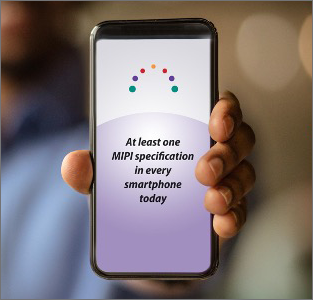MIPI CSE℠
MIPI Camera Service Extensions
.png?width=1200&height=600&name=Banner%20Images%20-%20MIPI%20(1).png)
Developed by: Camera Working Group
A set of extensions that define functional safety and other services for automotive image sensors and associated control interfaces
Quick Facts
-
Advantages
- Extends capabilities of the MIPI CSI-2 image sensor interface for automotive and IoT use cases
- Supports functional safety as defined by the ISO 26262 standard
- Provides an Enhanced Safety and Security Camera Control Interface (ESS CCI)
- A key component of the MIPI Automotive SerDes Solutions (MASS) connectivity framework
-
Fundamental Features
- Functional safety enablers
- Extended Virtual Channel (eVC) for transmission of more data types
- Extended Data Type (eDT) to transmit higher-resolution image data
- For use with MIPI A-PHY connectivity systems
-
Use Cases
Automotive:
- Advanced driver-assistance systems (ADAS)
- Autonomous driving systems (ADS)
- Lane-keep assist systems
- Rear backup camera systems
- Virtual side mirrors
IoT:
- Manufacturing quality control (visual inspection)
- Automated machine vision / robotics
- Surveillance
- Drones and aeronautic use cases involving cameras
-
Physical Layers
- MIPI A-PHY
- MIPI C-PHY
- MIPI D-PHY
- Also supports I2C for ESS CCI
Get the Specification
-
Current Version
MIPI CSE℠ v1.0 (September 2021)
Member version
Overview
General Info
-
Overview
The MIPI Camera Service Extensions (MIPI CSE℠) specification defines extended functions for MIPI Camera Serial Interface 2 (CSI-2®), including functional safety and other features. The CSE specification can be used in automotive systems to achieve functional safety goals from ASIL B through to ASIL D.
By enabling these services, MIPI CSE helps to standardize and streamline the integration of high-performance image sensors in next-generation vehicles and IoT devices.
MIPI CSE is a component of MIPI Automotive SerDes Solutions (MASS), a standardized, end-to-end connectivity framework based on MIPI A-PHY for the integration of automotive image sensors and displays with built-in functional safety and security.
The CSE specification was developed by the MIPI Camera Working Group and is available only to MIPI Alliance members. For information about becoming a member, visit Join MIPI.
-
SEP Format
CSE defines a common format, Service Extension Packet (SEP), to provide packetization and uniform delivery of MIPI CSI-2 image data over the MIPI A-PHY / C-PHY / D-PHY physical layer interfaces. The SEP format allows for image data transfers with functional safety and other features over heterogeneous combinations of physical-layer interfaces, lane configurations and symbol rates.
When used with A-PHY, the image content can be adapted using the A-PHY protocol adaptation layer for CSI-2 (MIPI PAL/CSI-2) to and from the SEP format into A-PHY A-Packets either at SerDes bridges or by the image sensor and processor for end-to-end data transfer.
-
Functional Safety & Security
The functional safety features enabled by MIPI CSE help automotive system designers build systems that meet the requirements laid out in the ISO 26262 standard from ASIL B to ASIL D. They include the following:
- Cyclic redundancy check (CRC) to detect data transmission errors
- Frame counter to detect frame loss or duplication
- Timeout monitoring to detect any loss of data between image sensors and processors
CSE also provides an Enhanced Safety and Security Camera Control Interface (ESS CCI) that extends the Camera Control Interface (CCI) defined in CSI-2 by adding functional safety features, including CRC and a message counter, for control of CSI-2 camera interfaces.
Security features will be added through future CSE updates and the upcoming MIPI Security Specification.
-
Additional Features
Other features introduced in CSE v1.0 include:
- When used with A-PHY, Extended Virtual Channel (eVC) increases the number of virtual channels available for CSI-2 to simultaneously transmit more types of data, such as autofocus and phase detection data, in addition to image data.
- When used with A-PHY, Extended Data Type (eDT) allows transmission of higher-resolution image data over CSI-2 interfaces to support emerging and future generations of image sensors.
- Functional test vectors to streamline testing and implementation of image sensor interface.






